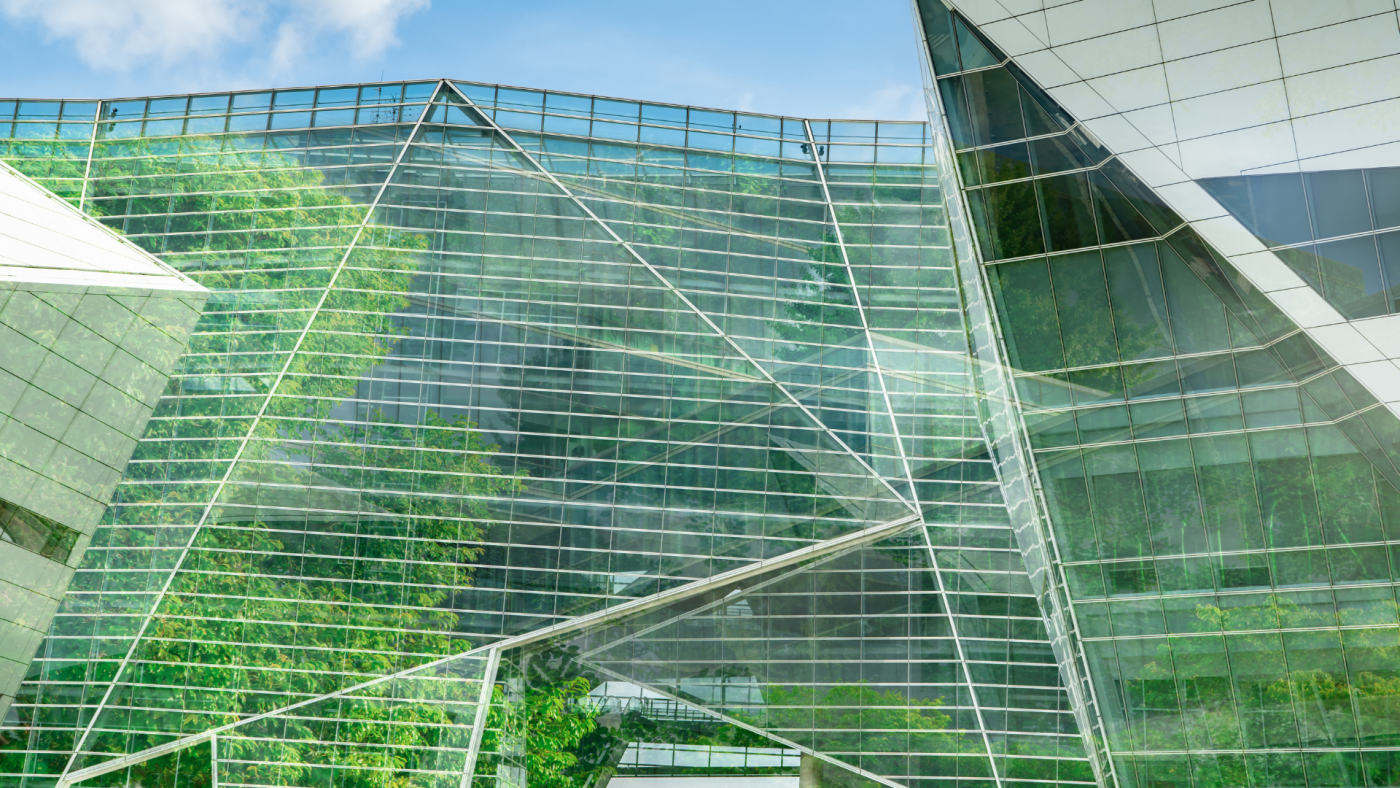Did you know that the building sector is one of the main sources of greenhouse gas emissions in the EU? According to statistics, 40% of energy consumption in Europe comes from buildings. This has led the European Commission to create Directives on Energy Efficiency which oblige the improvement of the energy efficiency of buildings, thus, introducing the concept of NZEB or Near Zero Energy Building. This desire is reflected in The European Commission’s long-term strategy for 2050, which acknowledges the necessity of an almost complete decarbonisation of the building sector to achieve its climate objectives. In this article, we explain what exactly an NZEB building is and its importance in sustainable development.
Energy consumption is something that occurs in a wide variety of circumstances and locations, but especially in buildings, whether they are family homes, residential buildings, commercial buildings or factories.
This is why the EU (European Union), as well as other organisations and countries, have focused on reducing the total amount of energy consumed by buildings, starting with a reduction of consumption to a very low level, until almost zero energy is used.
In order to achieve this goal within a given timeframe, models, plans and regulations need to be established, both for organisations and for countries. This is how the concept of Nearly Zero-Energy Buildings (NZEB) emerged.
What are Nearly Zero-Energy Buildings?
Before providing a more formal definition of what Near Zero Energy Buildings, more commonly known as NZEBs, are, it is important to clarify the confusion that often occurs when simply reading the term, namely …
How could a building not consume energy?
A Nearly Zero-Energy Building isn’t literally an energy-free building. When we talk about nearly zero-energy buildings, we mean buildings that on the one hand consume nearly as much energy as they produce. This energy, in turn, comes from renewable sources, produced locally or in the surroundings.
This means that NZE Buildings will continue to consume energy, but this energy will have a low impact on the environment, so they won’t consume energy from non-renewable sources such as oil or petroleum, natural gas, coal or uranium.
The NZEBs definition by the official European Commission: “a building that has very high energy performance (…) The nearly zero or very low amount of energy required should be covered to a very significant extent by energy from renewable sources, including energy from renewable sources produced on-site or nearby.”
Other terms commonly used instead of NZEB might be:
- Zero-Energy Building (ZE),
- Zero Net Energy (ZNE),
- Net-Zero Energy Build (also NZEB),
- Zero Carbon Building.
Most of these are used more or less interchangeably with Near-Zero Energy Buildings, but some may be slightly more difficult to define.
What Criteria have European Buildings been following since 2020 to be considered Nearly-Zero Energy Buildings?
Since 2020, every new building should be built with sustainability in mind. While existing buildings can considerably reduce their energy consumption when going through a major renovation, there are a number of aspects that need to be taken into account for buildings to become almost zero energy. First of all, it is not only about the energy sources, but about the energy needs of the building, which makes it much more important that they are built with sustainability and efficiency in mind.
4 Reasons in which NZE Buildings contribute to Sustainable Development
Sustainability simply cannot be achieved if not integrated into the lives of people, families, employees, building occupants and members of society. Therefore, building on the basis of durability criteria will be necessary to achieve sustainability at the city and country levels.
In this sense, there are many ways in which NZEBs contribute to achieving sustainable development. Here are 4 of them:
1. Making buildings less energy-consuming by design
There are many ways to reduce the amount of energy consumed. Many of these come from our own habits and behaviours as energy consumers, while many others come from our actual needs as humans and as employees.
As such, making sure to work with architects and engineers to design building solutions that can make better use of natural resources, such as sunlight, wind, heat from the sun, and location, among others, will help us reduce our energy consumption without affecting our comfort and needs.
2. Encouraging the adoption of renewable sources of energy
New buildings must be NZEBs by law, which means that the greatest part of the energy required for a building to work properly must use energy generated from renewable sources, mostly generated on-site or nearby.
This really helps change or improve the perception of renewable sources of energy, making it look not only like a good alternative but as a viable way of generating energy.
3. Using regulations as a way to ensure sustainable practices for building construction
Initiatives, such as that of the EU, to turn all new buildings NZEB by 2020, make it not just an option, but a necessity for building owners to use other techniques and materials that can ensure that energy consumption is reduced while providing occupants with what they need to live comfortably.
4. Creating a framework to be followed to build highly efficient buildings
Overall, standardisation is important because it helps to make sure that things that work will be predetermined. This way, initiatives for NZEBs can create this framework or guidance with the tools, materials and techniques available for the construction of sustainable and smart buildings.
There are already certifications and standards that help achieve the goals of Near Zero Consumption Buildings or Sustainable Buildings. Among them, the most well-known are:
- Passivhaus
- BREEAM
- LEED
- WELL
If you want to know more about them, read this blog article.
6 Examples of Sustainable Buildings
When you have a goal such as making every new building a near-zero energy building in a given time period, it is very important to have examples of successful implementations or pilot projects for this type of construction.
Seeing what is currently possible, and what has been achieved already, works as a source of inspiration, as well as a motivation boost. NZEBs are not only a dream but a demonstrated reality.
Let’s discover some successful examples of international implementations:
Messequartier
Located in Graz, the second largest city in Austria, this is a complex built to meet the standards of a passive house, with the main goal of having common spaces in central locations, as well as several open areas.
It was built with insulated bricks, with triple glazing on the windows to ensure the best air circulation, and the house is heated by district heating.
Technical University – Sofia, University Research Center
In Sofia, the capital of Bulgaria, the infrastructure of the university was improved, which led to an energy performance improvement of around 45% compared to current norms. Brick and concrete with thermal insulation and windows with double glazing were used.
Sems Have
West of Copenhagen, the city of Roskilde in Denmark was the place where the renovation and transformation of a building into a low-level energy-consuming building of apartments took place.
For this, the thermal envelope was improved by using walls with up to 480 mm of insulation, 400 mm for the roof, with three-layer low-energy glazing for windows. The building is also connected to a district heating network and features mechanical ventilation.
Järvenpää Zero Energy House
With the goal of being the first zero-energy house in Finland, this house in Järvenpää has concrete walls with 300 mm insulation walls. It counts with a water-based heating system, low-energy lighting, and a mechanical ventilation system.
Maison DOISY
With the goal of producing a nearly zero-energy building in France, this single-family house located in the French commune of Niort has brick walls and a roof insulated with mineral wool inside. For heating, a gas-condensing boiler delivered by a floor-heating system is used.
University of London, Stratford New Library
The University of London, in the city of London, England, in the UK, aimed to provide modern library facilities for the students of this university. It uses a well-insulated concrete slab for the roof, and two types of walls, insulated bricks, as well as insulated glazed curtain walls. It is heated by Low-Temperature Hot Water.
Even if a few years might be needed before every new building reaches a zero-energy state, and most existing buildings get the necessary renovations to become nearly zero-energy buildings; it is clear that this is one fundamental aspect of building the cities of the future, and achieving sustainability.
And now that you have all this information, and you have a clear idea about the Nearly Zero Energy Building (NZEB) concept, go a step further and watch our Webinar on “the NZE Building, Microgrids and Photovoltaic trends”:

![Nearly Zero Energy Buildings or NZEB [Webinar]](https://no-cache.hubspot.com/cta/default/437281/e8117406-119b-4a93-901e-fe14fe0f0370.png)


